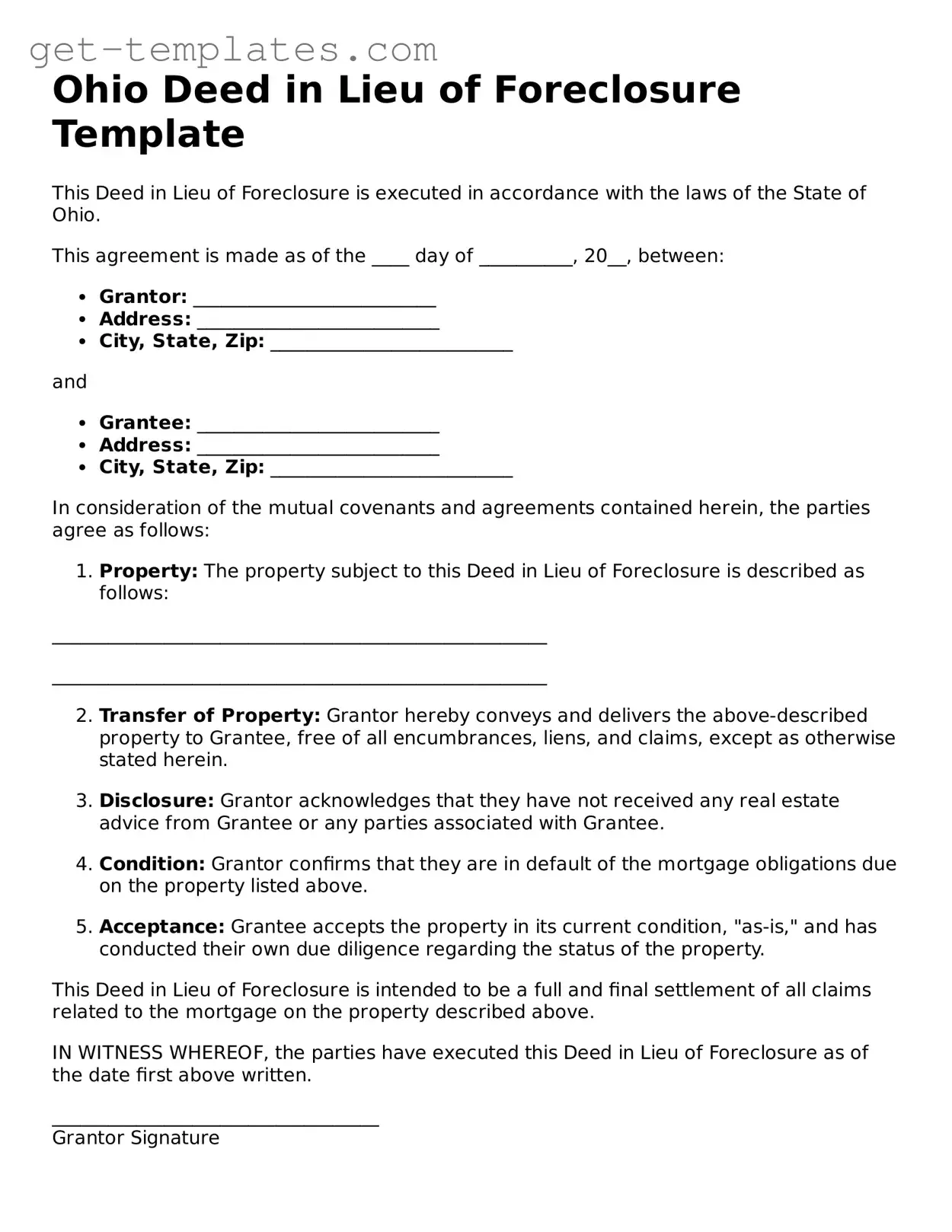Ohio Deed in Lieu of Foreclosure Template
This Deed in Lieu of Foreclosure is executed in accordance with the laws of the State of Ohio.
This agreement is made as of the ____ day of __________, 20__, between:
- Grantor: __________________________
- Address: __________________________
- City, State, Zip: __________________________
and
- Grantee: __________________________
- Address: __________________________
- City, State, Zip: __________________________
In consideration of the mutual covenants and agreements contained herein, the parties agree as follows:
- Property: The property subject to this Deed in Lieu of Foreclosure is described as follows:
_____________________________________________________
_____________________________________________________
- Transfer of Property: Grantor hereby conveys and delivers the above-described property to Grantee, free of all encumbrances, liens, and claims, except as otherwise stated herein.
- Disclosure: Grantor acknowledges that they have not received any real estate advice from Grantee or any parties associated with Grantee.
- Condition: Grantor confirms that they are in default of the mortgage obligations due on the property listed above.
- Acceptance: Grantee accepts the property in its current condition, "as-is," and has conducted their own due diligence regarding the status of the property.
This Deed in Lieu of Foreclosure is intended to be a full and final settlement of all claims related to the mortgage on the property described above.
IN WITNESS WHEREOF, the parties have executed this Deed in Lieu of Foreclosure as of the date first above written.
___________________________________
Grantor Signature
___________________________________
Grantee Signature
Witnessed By:
___________________________________
Witness Signature
Date: ____________________________
State of Ohio
County of ________________
On the ____ day of __________, 20__, before me personally appeared ______________________, the signer of the above deed, known to me to be the person whose name is subscribed to this instrument and acknowledged that they executed the same.
___________________________________
Notary Public
